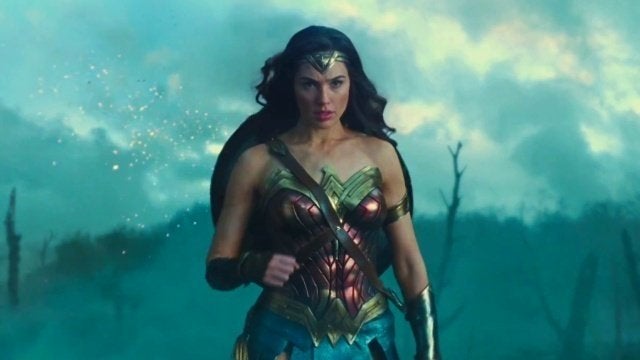Just a year ago, many of us were still frequenting cinemas with our friends and family. I was an AMC Stubs A-List member hitting every new release in the theater with my friends. Who cares if the movie was good? We got out of the house, got to hang with our best mates, and devour all the expensive concession stand food we could stand. Just like going to dinner, going to the movies was an entertaining way to pass the time – especially when it was freezing outside.
Fast forward a year later, and every theater in New York City is still shuttered away. If you walk by any movie theaters now, you’ll notice that they still have old movie posters pinned up, reminding us of a happier time. But the giant buildings remain void of life, and the usual hustle and bustle of cinema lobbies are now enveloped by an eerie silence. I like to walk by the AMC at Lincoln Square and look inside its glass walls. I hope that one day I’ll see a giant “opening soon” sign, but the reality remains that nothing will ever be the same, even after the pandemic.
Where does this shift in consumption leave creators? Movies have always denoted escapism for their millions of viewers and now, with all the pain and grief surrounding us, the pressure to create that escapism runs higher than ever before. With cinemas shuttered away, that pressure to create a world away from reality falls heavily on streaming services. Nielson reported in 2020 that streaming increased by 25% for the average viewer, and that more viewers flocked to streaming platforms compared to live television. Deloitte also found that during 2020, the average American customer was paying for up to four streaming services – up from three in 2019 as reported by Variety. That’s millions of dollars spent on streaming platforms, which – if you think about it – does make sense. Most streaming platforms, including the ever-popular Netflix and HBO Max, have vowed to create tons of original content, and this influx of media only skyrocketed in 2020.
HBO unveiled its plan to release Wonder Woman 1984 – one of the most highly anticipated movies of 2020 – on streaming services at the same time the movie hit the cinemas that had managed to keep their doors open. Millions of fans, including me, couldn’t contain our excitement. Was HBO Max making history? For a streaming service that only debuted in the first half of 2020, HBO Max was already pushing past the envelope.
Did their gamble pay off?
The streaming giant increased its subscribers by four million in the wake of the announcement of Wonder Woman‘s release on its platform, according to data provided by Antenna to the Observer. There were also a record-breaking number of single-day downloads for the HBO MAX app on the day of the movie’s release, according to Bloomberg. This further showcases the hype and anticipation surrounding the release of the new Wonder Woman movie. Considering the public health situation and the amount the movie stood to cost the studio if it flunked, Warner Media saw its release to HBO Max as a win-win situation: give DC fans something they want, and gain tons of monthly subscribers during the process.
While the idea seemed like a great way to retain long-term subscribers, what Warner Media didn’t realize is the expectations it set for the average viewer subscribing to the platform. And unfortunately, the movie didn’t deliver. Though the movie was a decent two-hour watch, it was nothing to write home about. Not to mention, the whole second half of the movie seemed rushed and out of place. But don’t take my word for it; thousands of fans took to Twitter to exclaim their disappointment.
— Goldy (@GoldGloveTV) December 26, 2020
Ok, Wonder Woman 1984 is, um, not great. It’s perfectly fine, but the reviews I read beforehand kinda hyped it up. Tamper your expectations and it’ll seem more entertaining. Definitely a good movie, but also underwhelming…if that makes any sense.
— Dr. Marcus Bell (@NewBlackScholar) December 26, 2020
Where does this leave the future of new releases?
Wonder Woman’s streaming box office fail goes to show just how much pressure is riding on streaming platforms. It’s not just about the quantity of content being put out anymore, it’s also the quality. Media conglomerates have to be prepared for the backlash they’ll eventually face if a movie fails to deliver during its release. Not to mention, they can’t bank on the special effects bailing them out anymore. Sure, when you’re in a cinema, the booming speakers and lifelike images make you feel like you’re part of the movie itself – like most theaters boast, watching a movie is an experience in itself. But when we’re at home, most of us are streaming straight from our laptop or 40-inch TV. Only some of us have the luxury to watch movies in a designated home theater, all built up with a Dolby audio sound system. Without the earth-shattering sound, audience involvement, and larger than life visuals, can a movie really be successful?
There really isn’t a right answer to this. If a movie in itself has a compelling storyline devoid of expensive special effects that moviemakers spend all their savings on, maybe it’s worth watching on a streaming platform. But for a movie like Wonder Woman that cost Warner Media millions of dollars in visual effects, can you really translate that to a 13-inch screen of a laptop? I don’t think so, and therein lies the ultimate problem for the future of cinema. While many of us enjoy binging our favorite TV shows from our mobile devices, a lot of us will be consistently disappointed if a major movie can’t be enjoyed to its fullest on streaming services. For movie studios, this is bad news. If worrying about quarantining your actors and taking extra precaution measures to shoot wasn’t enough, the added pressure of viewers’ demanding content specially made for ‘at-home viewing’ makes it even harder.
It’s easy to say that streaming platforms have it great right now but in reality, most of them are concerned about their next move. It’s only a matter of time before viewers get bored of the same old content if streaming platforms don’t keep up with a steady release schedule, which is now only harder to get done because of all the regulations imposed by the pandemic. None of them want to lose subscribers, but if they can’t put out movies that hit every checkbox for the discerning viewer, the pandemic will eventually get to them as well.
I hope that my bleak prediction falls through. But with the pandemic continuing in 2021, the future of cinema remains more uncertain than ever.



